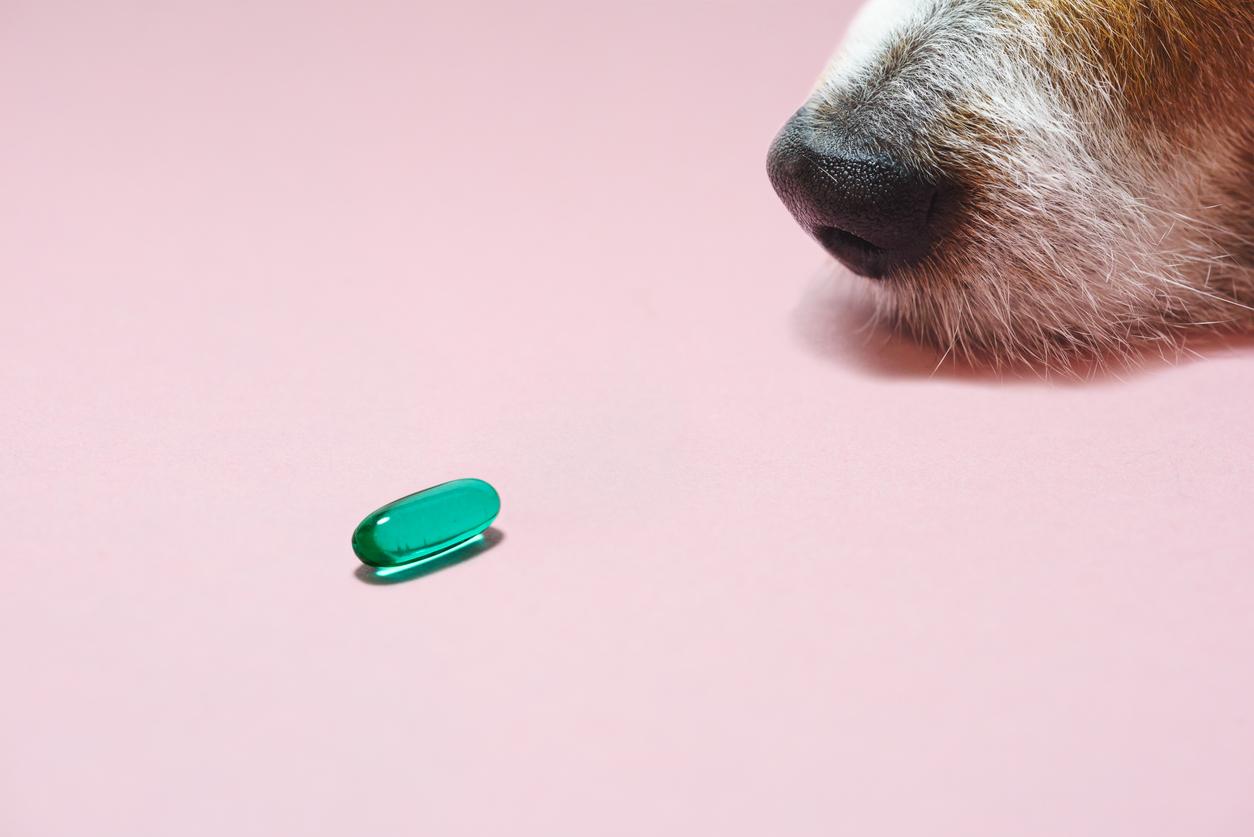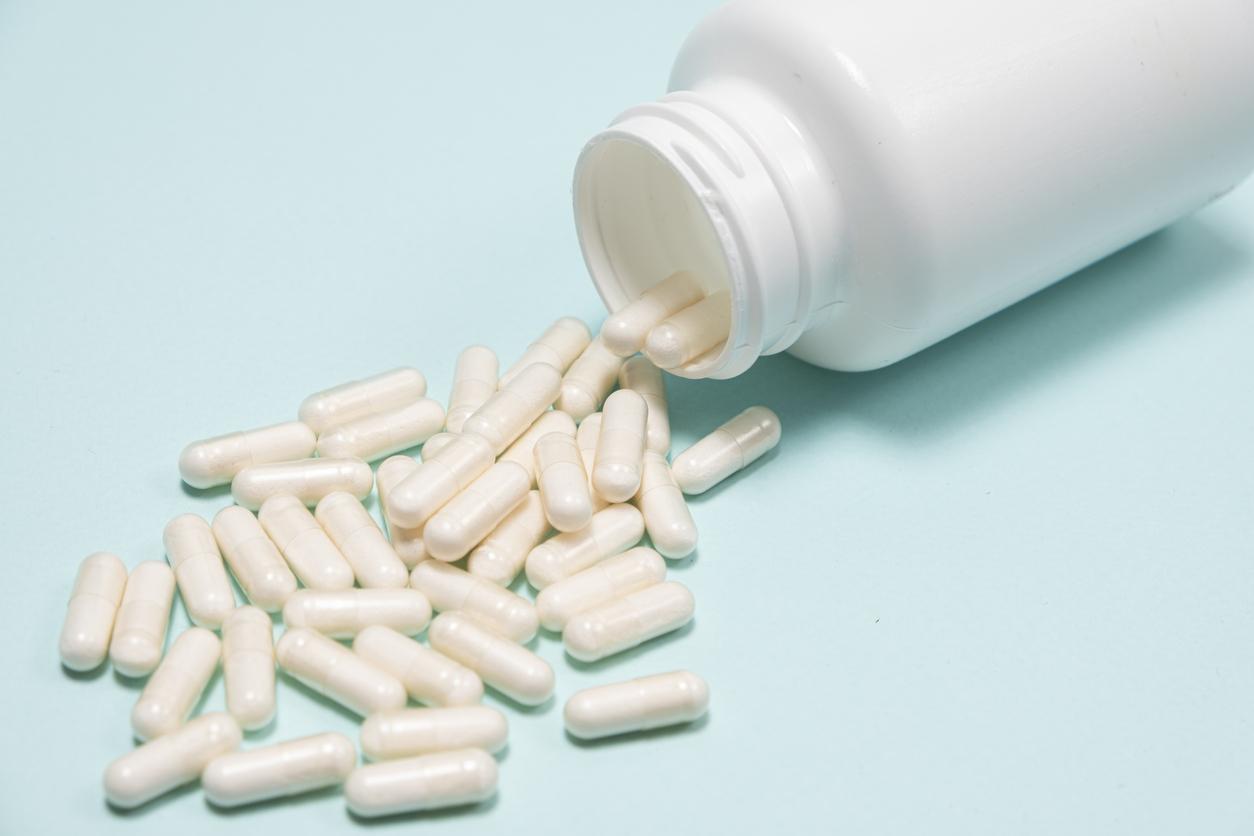You can’t do that with a drink behind the wheel, we know that. But the use of medicines in traffic is also dangerous. And sometimes punishable.
You probably know him: the yellow sticker on a medicine box with the warning text ‘this medicine can impair your ability to react’. A rather noncommittal and vague message. What do you do with it? Do you leave the car if you are taking medicines with such a yellow sticker on the box? Or do you just keep driving? Chances are you’re doing the latter. “Three-quarters of people do not pay attention to the sticker,” says Professor Han de Gier, pharmacologist at the University of Groningen. He has been involved with drugs in traffic for years and estimates that at least 5 percent of all car drivers take drugs that pose a risk to driving. “And that is still on the frugal side, 10 percent is a more realistic estimate.”
In doing so, people unconsciously take great risks. De Gier has calculated that in 2006 more than seventy people were killed in traffic and 1600 people had to be hospitalized as a result of narcotic drug use in traffic. In comparison: 100 people are killed and 2,300 injured in traffic every year due to alcohol consumption.
Less fast and alert
Drugs that pose a risk to driving double the risk of an accident. They can make you drowsy and reduce responsiveness. You are less fast and alert, which is very important in traffic. The effect of some medicines is at least as strong as that of a few glasses of alcohol.
The only difference is that there is a clear limit for alcohol consumption. Someone with a blood alcohol level of more than 0.5 is no longer allowed to drive. Anyone who does so is punishable.
There is no legal standard for medication use. It is not fixed how much maximum you can take of which drug. However, driving under the influence of drugs that pose a risk to driving is a criminal offence. Article 8 of the Road Traffic Act states that it is prohibited to drive under the influence of a substance that you ‘know or should reasonably know’ reduces your driving skills to such an extent that you can no longer drive a car properly.
Test your reactions
With a virtual reaction test (www.rijveiligmetmedicijnen.nl) on the Internet, drug users can check the effect of the drug on their driving behaviour.
This is not superfluous, because the Nivel (research institute in health care) showed that people who take narcotic medicines drive no less often than motorists who do not take narcotic medicines. Liset van Dijk van het Nivel: “People don’t adjust their driving behaviour, even though they know that their medicine can have a negative influence on their driving ability. Most people give as the reason that they themselves have not noticed that the drug reduces their responsiveness.”
How does the drug ‘fall’?
The key question is, how do you find out how much influence the medicine has on you. Until about ten years ago, some medicines had a red sticker, the message of which was: do not drive a vehicle when using it. Now there is only the yellow sticker. This indicates that the medicine may affect your ability to drive. Mind you: can. If the drug has no effect, you can drive. You are only punishable if that is no longer possible and you can know that the medicine can affect your driving ability.
In addition, the yellow sticker system is not waterproof. Pharmacists have to put it on the box, but they don’t always do that. The sticker also makes no distinction between substances that have a lot and those that have little effect on driving ability.
Pharmacists and doctors have a list on which the drugs are classified according to weight. So they do know how dangerous the drug is, but they don’t always say it. To improve this, doctors and pharmacists will be urged with additional information from this month to inform patients when prescribing and dispensing a driving-hazardous drug.
Consult with the doctor
This route is not completely watertight either. Checking the package leaflet and the information on the box of your medicine yourself is always a good idea. Consultation with the doctor or pharmacist is therefore the motto, in addition to trying out for yourself how the drug ‘falls’ (see box: ‘Tips’). The degree of influence strongly depends on the person, because one simply reacts differently to a drug than the other. Compare it with alcohol, one person is already tipsy after one glass, the other doesn’t notice anything after five glasses. The strength of the drug and the dosage also play a role, as does age.
Medicines have a greater effect on the elderly. As we age, our body becomes more sensitive to drugs and we are less likely to break them down. It also determines how long someone has been using the drug. After a certain time, habituation can occur, negative side effects have partly disappeared.
The time at which the drug is taken also counts. A sedative taken in the evening usually wears off the next morning, provided it is a short-acting sleep aid and not a longer-acting sleep aid.
Inspection after your 70th
In short, clear rules about drug use in traffic are difficult to draw up. There is no exact standard that says when you can or cannot drive a car. But that changes if you have to be inspected for a new driver’s license after your 70th birthday. Then suddenly there are medicines that you are not allowed to drive.
The Central Bureau for Driving Licenses (CBR) uses three categories: medicines with a mild, moderate or severe influence on driving ability. Anyone who takes a substance from the heaviest category will not receive a new driver’s license. This concerns, for example, heavy painkillers, such as morphine, and sleeping pills and tranquilizers. The choice is then: keep swallowing or keep driving. “A moment like this can be a reason to think carefully about the use of medicines,” says Ruud Bredewoud, head of medical affairs at the CBR. “Is the drug still necessary? A sleeping aid, for example, is never intended to be taken for longer than two weeks. You can then discuss with the doctor whether it can be done in a lower dose or without it at all. And maybe there is an alternative means that you can drive a car with.”
Morphine is too heavy
But that is often easier said than done. Erica van Es* took Symoron for almost ten years, a morphine that she used for severe nerve pain. To all satisfaction: she kept the pain under control and was able to drive well with it. Until she had to renew her driver’s license and she had to fill out a medical statement because of her age. The regional CBR doctor did not approve the drug, because Symoron falls into the heavy category III of absolutely prohibited substances.
Erica had to choose: either the medicine or the car. Wanting to continue driving her newly modified car, she decided to change her medication. “I received a list of alternative means from the CBR doctor. Then, on the advice of the pain specialist, I switched to another, morphine-like drug that is allowed. But it doesn’t help me with the pain and the side effects are also great. I have stomach and intestinal problems, I am dizzy and suffer from insomnia. I didn’t have that with my old drug. And in all the time I’ve been driving I’ve never had a collision. In fact, I am a danger on the road right now.”
New drug list?
However, Ruud Bredewoud of the CBR sees no possibility to adjust the rules. “We have to obey the law. There are no exceptions.”
The pharmacy club KNMP is working on a new list of medicines on behalf of the Ministry of Health. This allows the legal requirements applied by the CBR to be amended in due course. The use of morphine may then be permitted in certain cases. Recent research has shown that people who take morphine are able to drive safely again after a few weeks of getting used to it. Erica van Es is eagerly looking forward to this possible adjustment.
* Erica van Es preferred not to use her real name in this article.
Which drug has which effect?
- Benzodiazepines are narcotic, they have a depressant effect on the central nervous system. They are generally used as a sleep aid, muscle relaxant or tranquilizer, and to suppress anxiety. Older women in particular often use benzodiazepines as a sleep aid. The muscle relaxant effect can lead to muscle weakness. Other effects include drowsiness, drowsiness, dizziness and reduced attention and concentration.
- Antidepressants can have dizziness, drowsiness, and blurred vision as a side effect. Especially the older, tricyclic antidepressants (TCAs) have this effect.
- Painkillers containing morphine can lead to drowsiness, especially in the first weeks of use. They can also influence judgment, which can lead to, for example, misjudgments and even reckless behavior in traffic.
- Cough remedies containing codeine or promethazine can cause drowsiness and drowsiness.
- All remedies for motion sickness have drowsiness as a side effect.
- The older remedies for hay fever or other allergies
also make you sleepy and drowsy, but these old antihistamines are almost no longer prescribed these days.
Tips for when you still want to get behind the wheel
How do you ensure that you are inconvenienced as little as possible by a drug that poses a risk to driving?
- Check with your doctor or pharmacist whether there is an alternative that affects the ability to react less or not.
- Everyone reacts differently to a drug. Therefore, first get used to the drug and see what the effects are for you, discuss this with your doctor or pharmacist.
- Take the reaction test www.rijveiligmetmedicijnen.nl. Take the test before you take your medicine, and repeat the test after you take the medicine. This way you can see what the medicine does with your responsiveness.
- Match the time of intake and the duration of action of the drug to the time of driving.
- Only drive short distances.
- Take lots of breaks.
- Please do not drive at night.
- Do not drink alcohol.
- Be careful with a combination of different medicines, because they can further enhance the effect on the ability to react.
- Always read the package insert of a medication. Medicines without a yellow sticker can also affect your functioning.
Sources):
- Plus Magazine

















